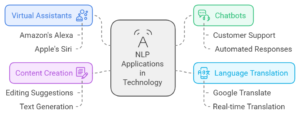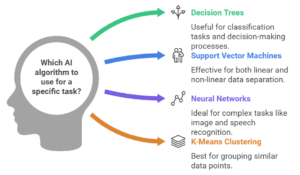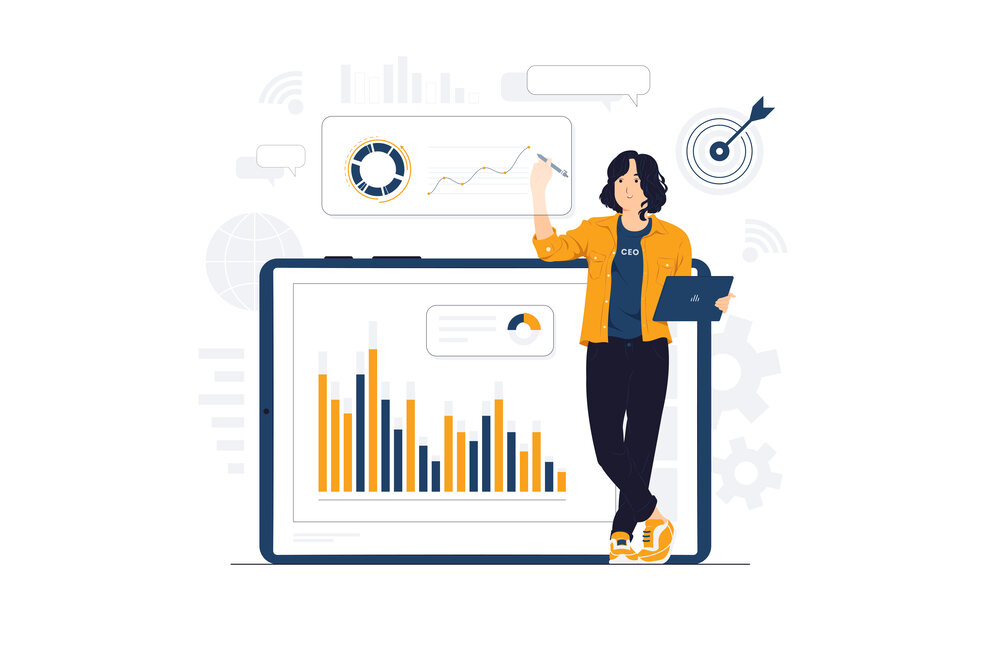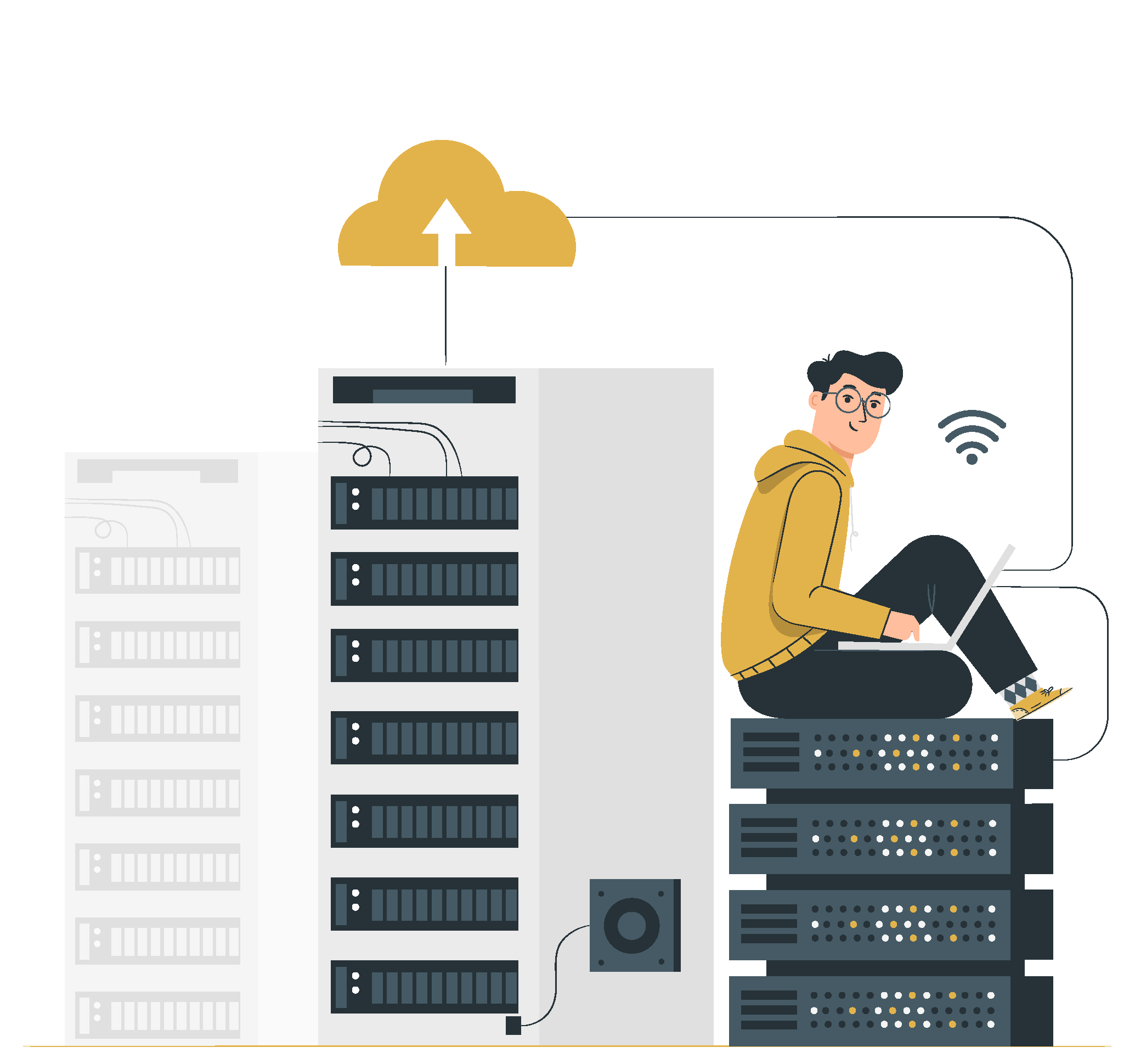
Unlock the full potential of artificial intelligence and explore how it’s revolutionizing industries, boosting innovation, and enhancing everyday life. Discover the limitless opportunities AI brings to businesses and technology today.
Artificial intelligence (AI) is rapidly transforming industries and technologies across the board. Understanding AI is crucial, as it plays a major role in improving both daily life and business operations. AI’s advancements are not just theoretical—they’re happening in real-time.
This introduction explores AI’s impact on the workplace and the economy, highlighting how it drives technological progress. As we delve deeper, it becomes clear how important AI is today, offering both exciting opportunities and significant challenges for the future.
Understanding Artificial Intelligence
Artificial intelligence (AI) has many definitions and core parts that make it work. Looking into AI’s history shows its growth and the power it holds. Today, AI is crucial in many fields.
Definition and Key Concepts
AI is about machines doing tasks that usually need human intelligence. This means they can learn, make decisions, and fix errors. Important parts of AI are:
- Machine Learning: A branch of AI where systems learn and get better from experiences.
- Deep Learning: An advanced type of machine learning that uses neural networks to look at different data.
- Natural Language Processing: Computers understanding and speaking human language.
History and Evolution of AI
AI started in the mid-20th century, thanks to early computing pioneers. AI has changed a lot since then. It went from basic systems to complex algorithms. Some big moments include:
| Year | Event |
| 1950 | Alan Turing publishes “Computing Machinery and Intelligence.” |
| 1956 | The term “Artificial Intelligence” is coined at the Dartmouth Conference. |
| 1997 | IBM’s Deep Blue defeats world chess champion Garry Kasparov. |
| 2011 | IBM’s Watson wins “Jeopardy!” against human champions. |
| 2020 | Advancements in machine and deep learning reshape various sectors. |
Importance of AI in Today’s World
AI is changing many industries like healthcare, finance, and transportation. In healthcare, AI improves diagnostic tools and treatments. In finance, it helps predict market trends. Transportation is safer and more efficient with AI, thanks to self-driving tech.
Types of Artificial Intelligence
Artificial intelligence comes in different types. Each has unique traits and functions. Knowing these types helps us see AI’s capabilities and what it might do in the future.
Reactive Machines
Reactive machines are the simplest kind of artificial intelligence. They look at what’s happening now to decide things without remembering past events. IBM’s Deep Blue, which beat chess master Garry Kasparov in 1997, is a famous example. This AI works well in set situations but can’t learn or change over time.
Limited Memory AI
Limited memory AI systems are a step up because they remember previous experiences. This AI gets better as it goes, which is great for things like self-driving cars. They look at past driving to make smarter choices, making them safer and more reliable.
Theory of Mind AI
The idea of the Theory of Mind AI is still new. It aims to understand human feelings and how we relate to each other. This AI is different because it tries to figure out and forecast how humans act, which could change how we interact with AI.
Self-aware AI
Right now, self-aware AI is just a concept. It would know about itself, much like how humans do. We’re not there yet with technology, but the idea of AI that knows it exists raises big questions about morals, being, and AI’s future.
| Type of AI | Characteristics | Examples |
| Reactive Machines | Operates solely on current inputs | IBM’s Deep Blue |
| Limited Memory AI | Learns from past data | Self-driving cars |
| Theory of Mind AI | Understands emotions and social dynamics | In development |
| Self-aware AI | Possesses consciousness | Theoretical |
Machine Learning and Its Impact
Machine learning is a key part of artificial intelligence. It lets systems learn from data to get better over time. Through special algorithms, it helps computers find patterns and make choices on their own. This capability is changing many areas, especially business.
What is Machine Learning?
Machine learning trains computers to recognize patterns and predict outcomes using data. It includes different methods like supervised and unsupervised learning. The main goal is to deal with large data sets effectively, helping in making informed decisions.
Applications of Machine Learning in Business
AI and machine learning have many uses in business. They help companies in important areas:
- Customer Segmentation: Understanding different customer groups for targeted marketing.
- Predictive Analytics: Forecasting sales, trends, and consumer behavior.
- Fraud Detection: Identifying and preventing fraudulent activities in real-time.
These uses show how machine learning can not only improve efficiency but also spur innovation. It affects product development and how companies interact with customers.
Challenges in Machine Learning
Machine learning brings challenges along with its benefits. These challenges include:
- Data Privacy: Ensuring compliance with regulations while using sensitive data.
- Algorithmic Bias: Addressing unfair biases in machine learning models that can lead to discriminatory outcomes.
- Need for Robust Datasets: Collecting high-quality, representative data essential for model training.
Companies need to tackle these issues carefully. This way, they can make the most of machine learning while staying ethical and efficient.
| Application | Description | Benefit |
| Customer Segmentation | Dividing customers into distinct groups. | Increased marketing efficiency and personalized experiences. |
| Predictive Analytics | Utilizing historical data to forecast future outcomes. | Improved decision-making and strategic planning. |
| Fraud Detection | Identifying suspicious activities through analysis. | Enhanced security and reduced financial losses. |
Deep Learning and Neural Networks
Deep learning is a part of machine learning that works like our brains. It uses neural networks to change many industries. Knowing about deep learning and neural networks helps us see why they are used so much.
Understanding Deep Learning
Deep learning relies on neural networks that have many layers. These layers work with lots of data. The more layers there are, the better it can spot patterns. This makes deep learning great for recognizing images and voices.
Neural Networks Explained
Neural networks have layers made of nodes. The first layers deal with simple input. The next layers handle more complex stuff. Activation functions make these nodes work in a non-linear way. This setup simulates how our brains work, making deep learning useful for many things.
Real-world Applications of Deep Learning
Deep learning is used in many fields, changing how things are done. Some key examples include:
- Image Recognition: It’s great at figuring out objects, events, and faces.
- Speech Recognition: Devices like Siri and Alexa understand and act on what we say.
- Autonomous Driving: Self-driving cars use it to see and make safe choices.
- Medical Diagnostics: It helps find diseases early by looking at medical images.
| Application | Industry | Benefit |
| Image Recognition | Technology | Enhanced security and user interaction |
| Speech Recognition | Consumer Electronics | Improved accessibility and convenience |
| Autonomous Driving | Automotive | Increased safety and efficiency in transportation |
| Medical Diagnostics | Healthcare | Faster and more accurate disease identification |
Natural Language Processing Explained
Natural language processing (NLP) helps computers and humans talk using language. It uses many methods to understand and create human language. As tech grows, the role of NLP in making communication smoother is becoming clearer.
What is Natural Language Processing?
NLP is about computers and people talking naturally. It includes understanding language, figuring out feelings, and making up sentences. NLP uses special algorithms to help machines get what humans mean.

Applications of NLP in Everyday Life
We see NLP examples every day in how we use technology. Here are some common ones:
- Virtual Assistants: Devices like Amazon’s Alexa and Apple’s Siri understand what we say and answer back thanks to NLP.
- Chatbots: Companies use chatbots with NLP to help customers. This way, people can get help without needing another person.
- Language Translation: Tools like Google Translate change the text from one language to another in real-time using NLP.
- Content Creation: Some tools suggest edits or help write content by using NLP to understand and generate text.
Challenges Facing Natural Language Processing
There are still hurdles NLP has to overcome. The main challenges include:
- Ambiguity in Language: Sometimes, language can be unclear or have many meanings. This makes it hard for machines to fully understand.
- Context Comprehension: It’s crucial to get the context right for meaningful conversations. However, NLP systems often miss subtle hints, leading to errors.
- Limited Datasets: Good NLP relies on lots of quality data. When data is lacking or biased, NLP doesn’t work as well.
| Challenge | Description | Impact on NLP |
| Ambiguity in Language | Language can have multiple meanings depending on context. | Challenges inaccurate interpretation and response generation. |
| Context Comprehension | Subtle context clues often determine the meaning of phrases. | Potential miscommunication due to misunderstanding context. |
| Limited Datasets | Data quality and diversity can vary significantly. | Poor learning outcomes result in ineffective NLP applications. |
Cognitive Computing in AI
Cognitive computing is a major step forward in technology. It mimics the way humans think in complex situations. This field combines with artificial intelligence to boost AI’s ability to make decisions and solve tough problems. Businesses use cognitive technologies to understand more than just data.
Understanding Cognitive Computing
Cognitive computing aims to make machines think, learn, and reason like humans. It’s different from traditional computing, which relies on strict algorithms. Cognitive computing learns from experiences. It helps systems analyze a wide range of unstructured data, like texts and images. This delivers deeper insights.
How Cognitive Computing Enhances AI
Cognitive computing transforms AI systems. It brings predictive analytics into AI, which is key in fields like healthcare and finance. In healthcare, it allows for personalized treatment plans through data analysis. In finance, it aids in risk assessment and detecting fraud by going through huge amounts of data quickly.
This technology doesn’t just improve AI, it also boosts human abilities. It opens new doors for innovation and efficiency in different areas.
AI Algorithms: The Heart of Artificial Intelligence
AI algorithms are crucial in today’s artificial intelligence. They allow systems to predict, classify data, and do complex tasks. These algorithms determine how AI works in different areas. Learning about these common algorithms shows their role in AI’s growth and adaptation.

Common AI Algorithms Used Today
There are many important algorithms in AI. Here are some widely used ones:
- Decision Trees: They classify data into branches, helping in decision-making.
- Support Vector Machines (SVM): Great for both linear and non-linear tasks.
- Neural Networks: Key in deep learning, handling tasks like recognizing images or speech.
- K-Means Clustering: Used for grouping similar data.
- Random Forests: It improves prediction accuracy by using many decision trees.
How AI Algorithms Learn from Data
The learning process of AI algorithms involves several steps:
- Data Collection: Gathering data that reflects real situations.
- Preprocessing: Making data ready for analysis, ensuring it’s good quality.
- Training: Feeding data to AI algorithms to learn patterns.
- Validation: Testing on new data to see how well the algorithm works.
- Iteration: Improving the algorithms with new data and feedback.
Choosing the right AI algorithms is key to their success in tasks. As AI evolves, understanding these algorithms is critical. They empower us to use artificial intelligence effectively.
Computer Vision and Its Applications
Computer vision is key in teaching machines to see the world like we do. It uses complex algorithms to help computers understand images and videos. This is crucial in fields like healthcare and automotive. It supports new tech that improves how we live and work.
What is Computer Vision?
Computer vision aims to make machines see as humans do. By recognizing images and objects, machines can respond in real-time. This tech is vital for things like security, and using facial recognition to keep places safe. It also checks products in manufacturing to ensure they meet quality standards.
Impact of Computer Vision on Industries
Computer vision is changing many industries. In cars, it’s making self-driving vehicles safer by analyzing roads and spotting hazards. In retail, it helps keep track of stock, boosting customer service.
Using computer vision helps businesses grow, engage better with customers, and stay ahead of the competition. It shows how important AI is in transforming various sectors.
Ready to innovate and transform your business? Say hello to CodeBeavers!
If you are looking for ways to bring your product or app ideas to life? We’ve got your back. CodeBeavers has the tools and engineers you need to make your projects come alive. With CodeBeavers, you’ll be able to build faster than ever, deploy code with ease, and scale like never before. Send us your requirements now, and let’s start winning together.




